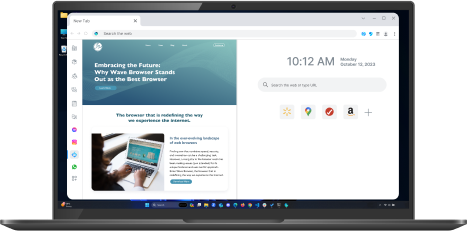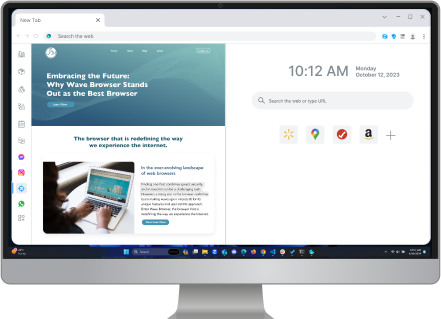Your Essential Plogging Starter Kit: Get Started Today
Table of Contents

Did you know that you can help your health and make your neighborhood better at the same time? Plogging is a new trend in the U.S.—it mixes exercise with cleaning up the environment. The word comes from a Swedish term "plocka upp," which means "pick up." This way, jogging turns into something more.
Now, when you jog, you also pick up litter around you! More and more people are getting into it. There are joggers and groups who want to help their community and the earth. If you want to know more about plogging and why it is growing, keep reading. You can even get started today!
What Is Plogging and Why Is It Gaining Popularity in the U.S.?

Plogging started in Sweden and it's a simple way to keep the outdoors clean and get fit at the same time. The name comes from the words jogging and "plocka upp," which is a Swedish word that means to pick up. The idea behind plogging is to pick up litter while jogging. This has two big benefits. You get rid of trash and you also burn calories as you go. Many people in the U.S. do plogging to help their towns and cities look better.
Social media has made plogging more popular and now people use it to share their own plogging stories and photos. This helps get more people to try it out with their friends and followers. You can go out plogging on your own, with your family, or join a group event. Plogging is a fun way to take care of your own health and also help your area become cleaner.
Next, we will look more at how plogging can help the environment in a direct way.
The Environmental Benefits of Plogging

Imagine a place where every jogger takes a trash bag with them. They pick up litter like cans and wrappers while they run. This is how plogging can help make that real. When people use proper disposal while plogging, it helps keep our parks and streets clean and nice for everyone.
Groups like Keep America Beautiful talk about how actions like plogging help keep trash out of landfills and stop bad stuff from getting into the soil. Plogging shows others what good care for the environment looks like. Joggers who grab litter become a good example for people in their town. When more joggers use a trash bag and pick up litter, their actions can spread and get more people to join in.
How Plogging Combines Fitness with Community Action

Plogging is great for the environment and your health. Fitness apps like Lifesum show you can burn around 288 calories in 30 minutes—more than regular jogging—thanks to the added squats and movements while picking up litter.
It’s also a social activity. Many ploggers share their progress online using hashtags and tracking apps, building awareness and encouraging others to join. This is a simple example of digital sustainability—using technology to support real-world environmental action without unnecessary digital clutter.
Plogging boosts your fitness, connects communities, and promotes a cleaner planet. Ready to start? Let’s look at what gear you’ll need.
What You Need to Start Plogging?

Plogging does not need you to buy any special things. You only need a few basic items. You should have comfortable shoes, gloves, and a reusable bag or a trash bag. These will help you get started. Many of the things you can get for plogging are light, made in a good way for the earth, and last a long time. Make sure to use the right shoes so your feet move well when you jog and pick up trash.
Some reusable bags come with drawstrings. These help stop spillage. Try to use things that are easy and safe. This makes plogging good, safe, and fun. Now, let’s talk about which gear to use.
Essential Gear for Plogging (Bags, Gloves, Footwear)
A good plogging bag is important when you plog. It helps you pick up litter as you go. Choose a reusable bag that has a shoulder strap or a drawstring design. This will make it easy to carry and use. Put on gloves to keep your hands safe from spillage and sharp stuff. Pick gloves that are tough and can be washed by hand. When you pick shoes, think about your own health. Go for ones that feel good and give your feet support. Every minute you plog helps you and also helps keep America beautiful. Get yourself ready with the right things so you can enjoy plogging.
Tips for Choosing Safe Plogging Routes
Choosing the right route helps you stay safe and make a bigger difference when you go plogging. It is good to look for places that have a lot of litter, like parks or paths where people walk a lot. You can also talk to your community to ask about spots that need cleaning up.
Try to be sure that your route is clear of things that might hurt you, like heavy traffic or thick plants. If you have only a short time, then pick a shorter route. This allows you to do just minutes of plogging and still help out.
- Explore neighborhoods you know well for easy access.
- Look at community apps or city websites to find out about cleanup events coming up.
- Go with friends so you can have more support and be safer.
Planning ahead is a good way to help make sure you enjoy your time and make the environment better. Next, we will go over a step-by-step guide for your first plogging trip.
How to Start Your First Plogging Session

Ready to start your plogging journey? First, you need to get your plogging starter kit—make sure to have safety gear, bags, and gloves. Then, choose a safe route where clean-up feels manageable. Set a time for your session, or turn it into your own event—whatever works best for you.
Keep in mind, the main goal is to collect litter and dispose of it properly. Every bit you pick up helps create a cleaner, healthier space for everyone. You’re also contributing to a broader movement—many community clean-up initiatives and environmental projects like The Great Global Cleanup or World Cleanup Day share the same mission of reducing waste and promoting sustainable habits.
Now, let’s walk through each step so you can get started and make your impact count.
Step 1: Gather Your Plogging Kit and Safety Gear
Starting plogging is easy when you have all you need. Be sure to bring:
- Gloves: These protect your hands from any dirt or cuts as you pick up trash.
- Reusable bags: A strong plogging bag with a shoulder strap will help you carry trash more easily.
- Trash bag: Bring some extra bags with you. This makes it simple to keep recyclable and non-recyclable items separate.
Always put safety first when you pack your kit. Pick a bag that is light, washable, and has strong stitching for both longer use and easy cleaning. Being ready helps a lot! Next, find out how to choose the best route for your plogging.
Step 2: Pick a Route and Set a Time
Your plogging route is important if you want the cleanup to make a big difference. Pick spots where you can see a lot of litter. It is good to go back to places you can get to easily. Choose safe ways to go, away from fast cars or thick bushes.
Set the minutes of plogging you will spend in each area. Decide the exact start and end point for your route. You can plan your own event by asking neighbors to join or sharing your plans on social media. Pick times that make it easy for people to join in. When your route is set, you can start your plogging and help clean up.
Step 3: Begin Jogging and Collecting Litter
Now it’s time to get moving. Plog by mixing jogging with stopping to pick up litter. You can do some squats to help with stretching and reach out your arms to plocka upp items hiding in the area. This way, you stay active and help clean up litter at the same time.
Try to keep a pace that works for you so you don't get tired, but you still burn calories. The way plogging mixes stretching, jogging, and picking up (plocka upp) helps you keep up your energy. It also makes sure the task is not boring. Share your progress online to show what you and others can do. When you finish collecting litter, sort out what you find. That will be the next step!
Step 4: Sort and Dispose of Trash Responsibly
Sorting the litter you collect is a key part of plogging the right way. Be sure to use a trash bag and keep different items apart—like plastics, cans, and paper—so you can put them in the right place for proper recycling and disposal.
Make sure each piece of trash gets handled in the best way possible. This helps reduce landfill waste, supports local recycling programs, and keeps harmful materials out of nature. Actions like these are small but powerful examples of sustainability in everyday life. By being mindful during your plogging routine, you're contributing to a cleaner planet and setting a great example for others.
Once you finish, you can feel good about your plogging and about keeping things right for the environment. Good job for seeing it through!
With every session, you help keep the area tidy and your body strong. That’s what plogging is all about—sustainable habits that improve both personal health and the environment. If you want to keep going, tell people about what you do. Get more friends to plog, too!
Surf with Ease, Speed, and Security!

Download Wave Browser for a seamless online experience like never before. Try it now!






















